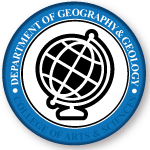Author ORCID Identifier
Deuerling - https://orcid.org/0000-0001-8825-0546
Document Type
Article
Publication Date
5-18-2016
Publication Title
Scientific Reports
Volume
6
Abstract
Although most models suggest continental Antarctica was covered by ice during the Last Glacial Maximum (LGM) it has been speculated that endemic species of soil invertebrates could have survived the Pleistocene at high elevation habitats protruding above the ice sheets. We analyzed a series of soil samples from different elevations at three locations along the Beardmore Glacier in the Transantarctic Mountains (in order of increasing elevation): Ebony Ridge (ER), Cloudmaker (CM), and Meyer Desert (MD). Geochemical analyses show the MD soils, which were exposed during the LGM, were the least weathered compared to lower elevations, and also had the highest total dissolved solids (TDS). MD soils are dominated by nitrate salts (NO3/Cl ratios >10) that can be observed in SEM images. High δ17O and δ18O values of the nitrate indicate that its source is solely of atmospheric origin. It is suggested that nitrate concentrations in the soil may be utilized to determine a relative “wetting age” to better assess invertebrate habitat suitability. The highest elevation sites at MD have been exposed and accumulating salts for the longest times, and because of the salt accumulations, they were not suitable as invertebrate refugia during the LGM.
Recommended Citation
Lyons, William Berry; Deuerling, Kelly M.; Welch, Kathleen A.; Welch, Susan A.; Michalski, G.; Walters, W. W.; Nielsen, U.; Wall, D. H.; Hogg, I.; and Adams, B. J., "The Soil Geochemistry in the Beardmore Glacier Region, Antarctica: Implications for Terrestrial Ecosystem History" (2016). Geography and Geology Faculty Publications. 96.
https://digitalcommons.unomaha.edu/geoggeolfacpub/96
Creative Commons License

This work is licensed under a Creative Commons Attribution 4.0 License.
Files over 3MB may be slow to open. For best results, right-click and select "save as..."


Comments
This is an open access article licensed under the Creative Commons Attribution license.
DOI https://doi.org/10.1038/srep26189